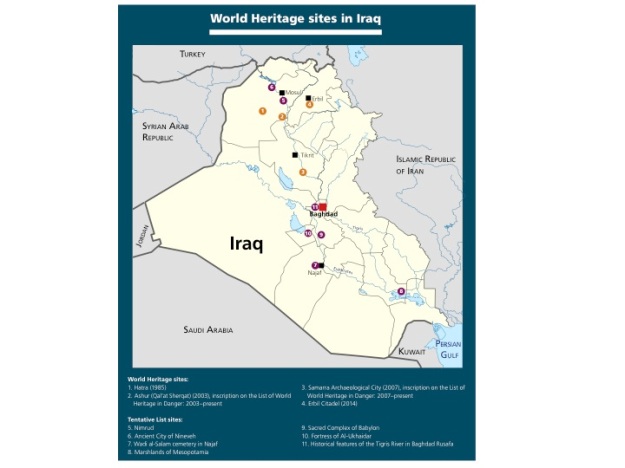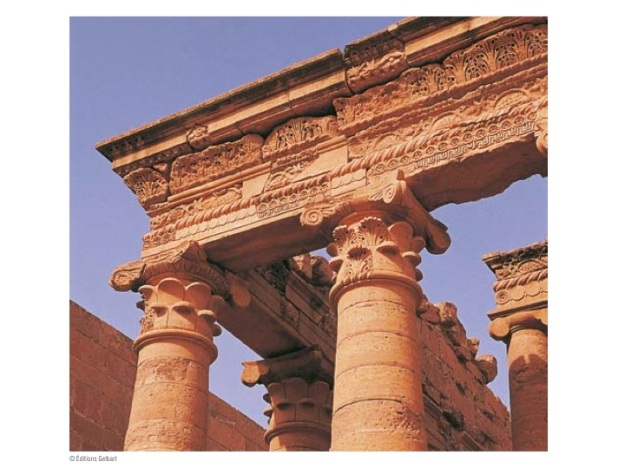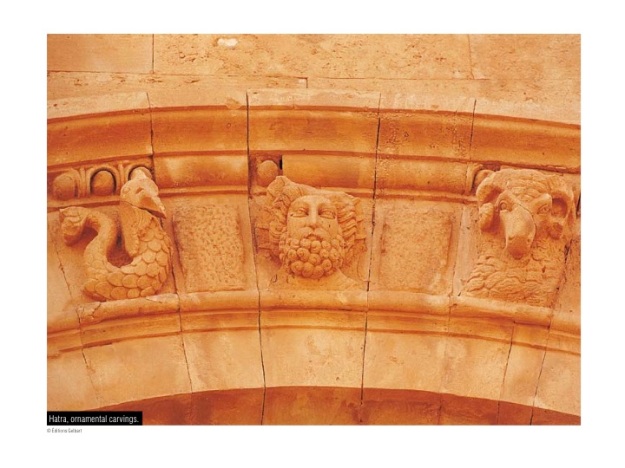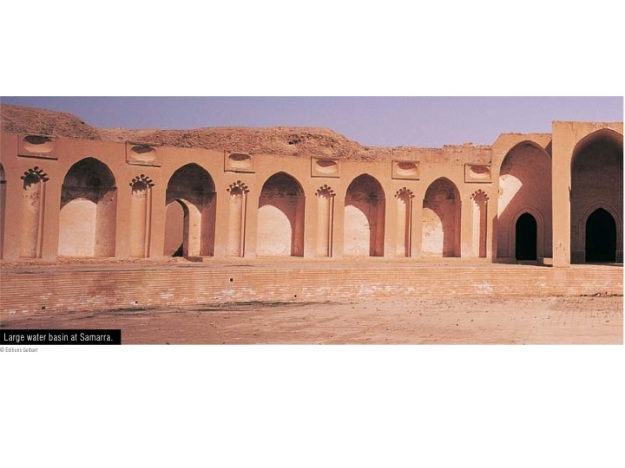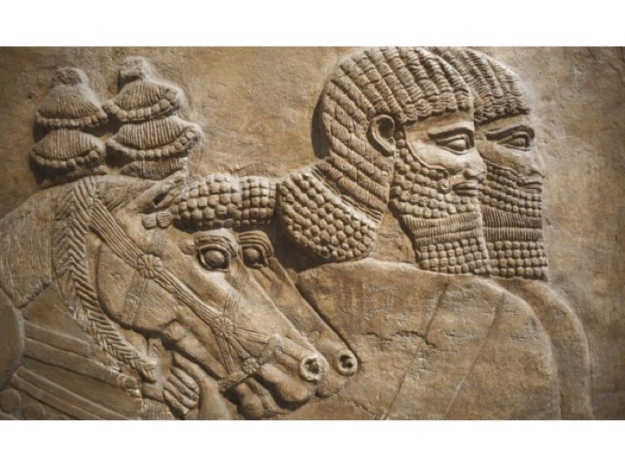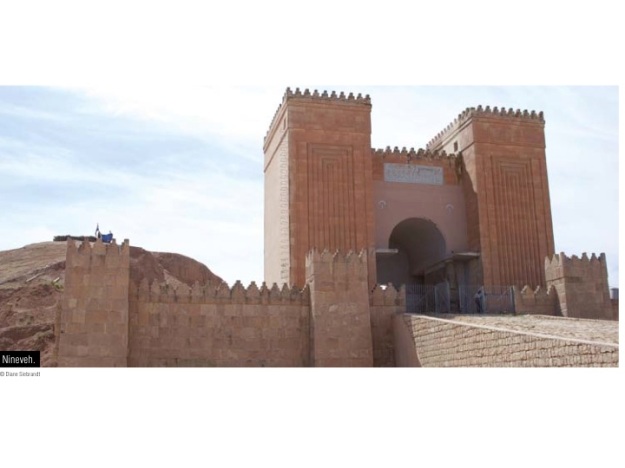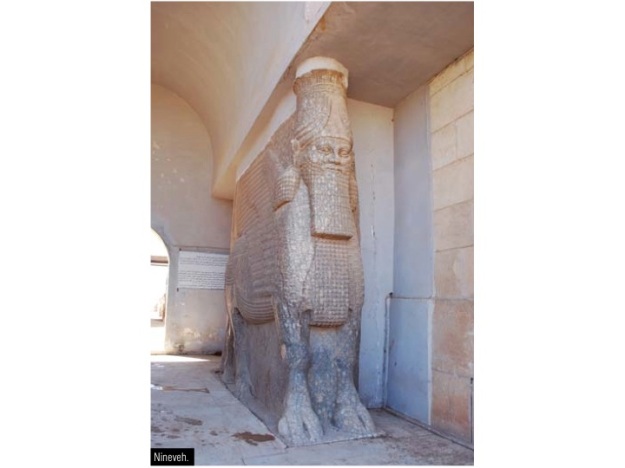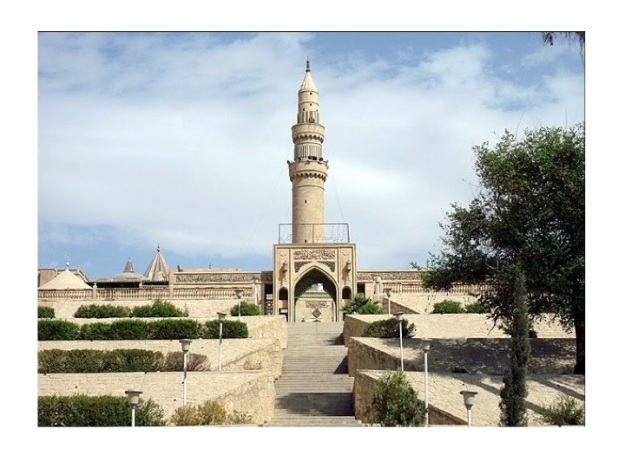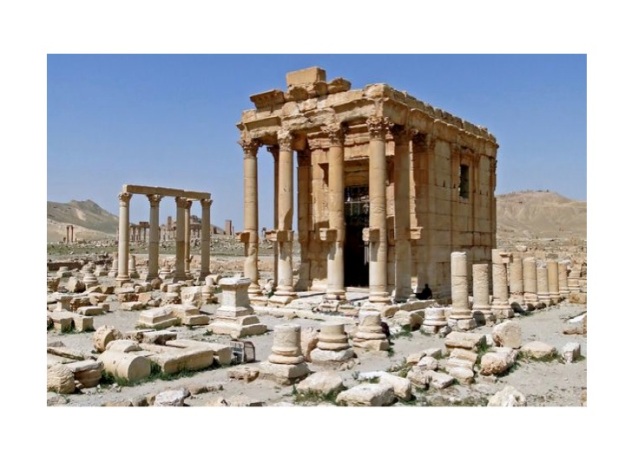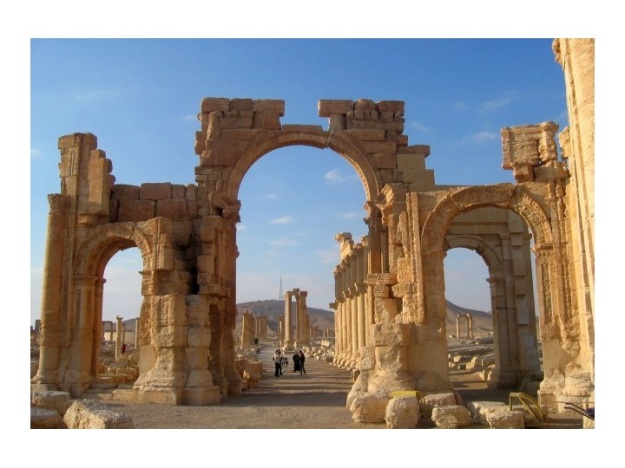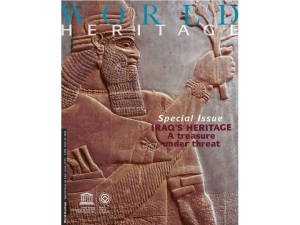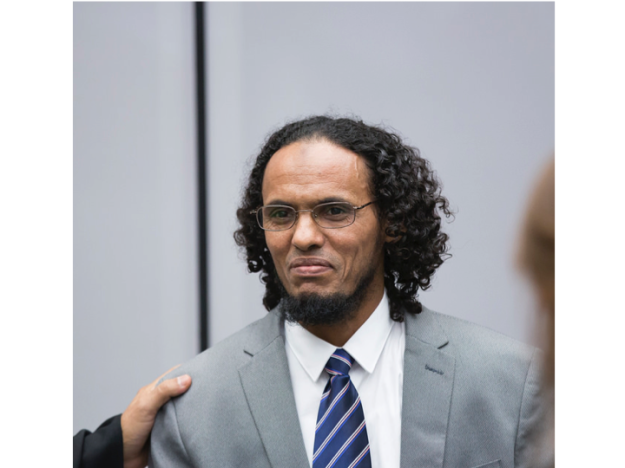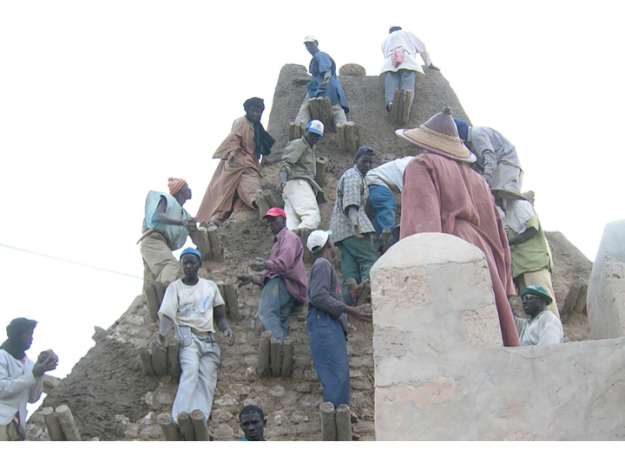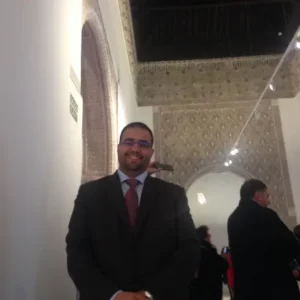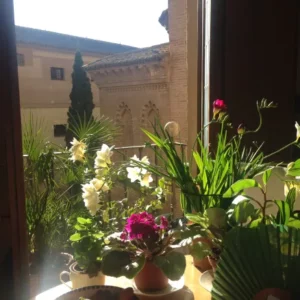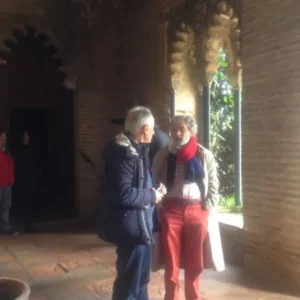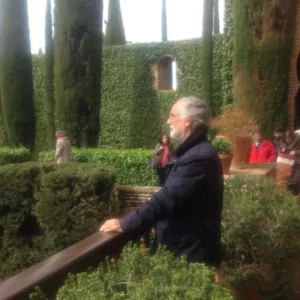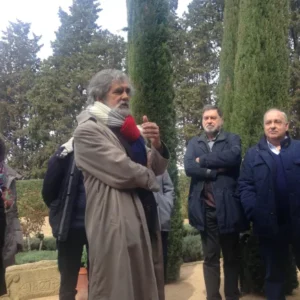Archivo de la categoría: Uncategorized
Cultural heritage as a target of extremism and intolerance
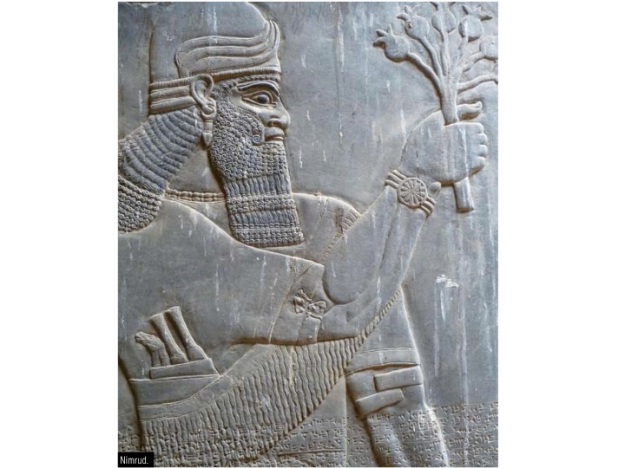 Iran, Iraq, Lybia, Syria and other countries of Middle East have an exceptional archaeological heritage, including world-famous sites and treasures of ancient civilizations as the Sumerians, Akkadians, Babylonians, Assyrians, Hittites, or the Persian Empire.
Iran, Iraq, Lybia, Syria and other countries of Middle East have an exceptional archaeological heritage, including world-famous sites and treasures of ancient civilizations as the Sumerians, Akkadians, Babylonians, Assyrians, Hittites, or the Persian Empire.
In recent years these sites are under threat, many of them being destructed or seriously damaged as result of civil wars and armed conflicts. The irruption of the Islamic State in Iraq and the Levant (ISIL), AL Nushah Front (ANF) and other individuals, groups, undertakings and entities associated with Al-Qaïda have aggravated the situation enormously. They have intentionally destructed cultural and religious buildings in sites as famous as Nínive and Palmyra. They have also seriously damaged, looted and smuggled cultural heritage items from libraries, archives and museums, as the Mosul Museum, many of them being now the victims of illegal trafficking
Iraq
Among the archaeological sites of Iraq (some of them included in UNESCO World Heritage List), terrorist attacks have seriously affected Hatra, Samarra, Nimrud and the Ancient City of Nineveh.
Hatra started as a small Assyrian settlement, which went on to become a fortress and a commercial centre of the famous oriental Silk Road. It was also the capital of possible the first Arab Kingdom in the chain of Arab cities. In April 2015, unvaluable elements of this 2.000 years-old civilization were deliberately destroyed by Daesh.
Samarra is located 130 kms north of Bagdad and considered one of the largest archaeological sites in the world. It was build in AD 836 by Caliph al -Mutasim, and developed by seven successive rulers until 892, when Baghdad was reinstated as the capital.
Nimrud was founded by the Assyrian King Shalmaneser I (1274-1245 BC) and became soon of the main cities of the Assyrian Empire. With the King Ashurnashirpal II (883-859 BC), Nimrud became the capital of the Empire (at the expenses of Assur) and a cosmopolitan flourishing city which remained the capital of the Empire during 150 years. In February and March 2015, Daesh continued its cultural cleansing by targeting cultural icons and historic monuments in Nimrud.
- See REUTERS – Islamic State militants bulldoze ancient Nimrud city
- See UNESCO – Director General condemns destruction of Nimrud in Iraq
The Ancient City of Nineveh was settled as early as 6000 BC and became the capital of the Neo-Assyrian Empire round 700 BC, during the Senacherib reign (705-681 BC). It is considered one of the most prominent cultural centres of antiquity that significantly contributed to the development of human civilization. The limits of the ancient location are marked with two principle mounds (tells) named Kouyunjik and Nabi Yunus (the so called «Nergal Door»), and the city wall with 12 kms in circumference.
Nineveh was also attacked by Daesh in February 2015 and the Nergal Door seriously damaged intentionally with power drills.
In Mosul, the Mosque of Yunus Prophet was dynamited in July 2014:
Very valuable pieces exhibited in Mosul Museum were also seriously damaged by Daesh members beginning of 2015. Whether Daesh destroyed the original pieces, or only copies whose originals are subject to illegal trafficking, is still unknown.
Syria
The Syrian civil war, combined in the recent past with Daesh terrorist activities in the region have devastated partly the amazing cultural heritage of Syria.
The oasis of Palmyra, commonly known as «the Pearl of the Desert» is being particularly targeted by Daesh.
The Baal Shamin Temple was destroyed in July-August 2015
The Arch of Triumph, considered one of the most exquisite sites included in the World Heritage List of UNESCO, was reported to have been destroyed in October 2015.
The image below corresponds to Mr Khaled al-Asaad, the Syrian archaeologist who was the head of antiquities for the ancient city of Palmyra. He helped evacuating the city Museum when he was captured by Daesh and retained for several weeks, forced to reveal the location where the cultural goods were hidden to protect them from extremists. He was finally murdered in a public place in August 2015. This is our little tribute to him… 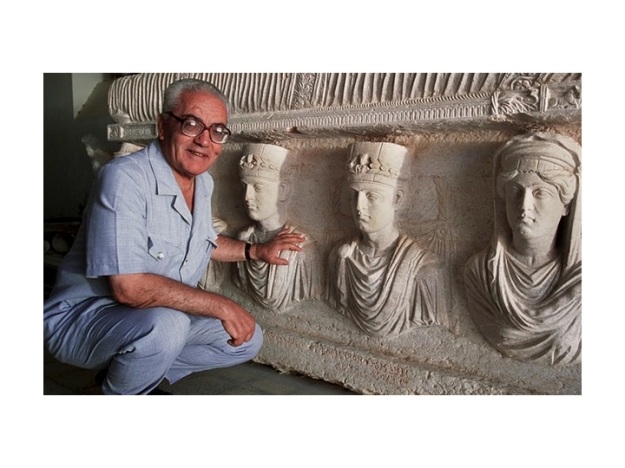 Information re Iraq is mostly extracted from:
Information re Iraq is mostly extracted from:
Mr Al Mahdi declared guilty of war crime of attacking historic and religious buildings in Timbuktu
During the confirmation of charges hearing of 1st March 2016, Mr Al Mahdi had expressed his intention to plead guilty of war crimes of attacking historic and religious buildings of Timbuktu.
The trial of ICC Case The Prosecutor v. Ahmad Al Faqi Al Mahdi (ICC-01/12-01/15) took place on 22-24 August 2016.
As announced, at the opening of this trial Al Mahdi admitted his guilt. Subsequently, the Prosecution presented evidence and called three witnesses. The Legal representative and the Defence presented their remarks before the Trial Chamber on 24 August.
The ICC Trial Chamber VIII was composed of Judge Raul Cano Pangalagan as Presiding Judge, Judge Antoine Kesia-Mbe Mindua and Judge Bertram Schmitt.
On 27 September 2016, this Trial Chamber unanimously found Mr Al Mahdi guilty beyond reasonable doubt as a co-perpetrator of the war crime consisting of internationally directing attacks against religious and historic buildings of Timbuktu, in Mali, including nine mausoleums and one mosque, in June and July 2012. Mr Al Mahdi was sentenced to nine year´s imprisonment and the time already spent by the suspect in detention will be deducted from the sentence.
Annual Report of the Spanish General Prosecutor´s Office – Some figures re Specialised Unit Protecting Heritage
The Spanish General Prosecutor´s Office has recently issued its Annual Report 2017, containing most relevant features of the work carried out by the Spanish Prosecutors in 2016.
Full text of the Annual Report is available here.
Chapter III Section (3) of this Annual Report describes the activities performed in 2016 by the Specialised Unit on Environment, Urban Planning and Cultural Heritage. Relevant facts and figures on this Specialised Unit, in the particular area of Cultural Heritage, are as follows:
- In 2016, a total of 174 Prosecutors are attached to this Specialised Unit, among which 50 are Delegated and 124 Specialists, including 14 Liaison Prosecutors, the Head of Unit (D. Antonio Vercher, Fiscal de Sala del TS) and 3 Prosecutors attached to him.
- The Prosecutors of this Unit have participated as speakers in a wide range of conferences, workshops and training courses, including inter alia an International Conference on Cultural Heritage at the College of International Studies in China (Southwest University, Chongqing) and the Annual Meeting of this Specialised Unit (Madrid).
- In 2016, this Specialised Unit started a total of 2.499 preliminary investigations (diligencias de investigación), among which 83 were related to Cultural Heritage. In 2015, the Unit initiated 2.232 preliminary investigations among which 52 were related to Cultural Heritage.
- Also in 2016, a number of 4.016 criminal proceedings on environment, urban planning and cultural heritage were ongoing at the Spanish judicial courts, including 220 crimes related to the destruction or illicit trafficking of cultural goods. In 2015, the number of ongoing criminal procedures on the above mentioned matters were 5.332, including 527 cases on Cultural Heritage.
- The same year 2016, the Specialised Prosecutors delivered a total of 1.472 formal charges (escritos de acusación), among which 30 were related to Cultural Heritage. In 2015, from a total of 1.125 formal charges delivered by the Specialised Unit, a number of 31 were related to Cultural Heritage.
- In 2016, a total of 975 judicial convictions on crimes pursued by this Specialised Unit were issued, including 21 convictions on cultural heritage. In 2015,927 judicial convictions on crimes pursued by this Specialised Unit were issued, including 16 convictions on Cultural Heritage.
- Lastly, in 2016 a total of 251 acquittals (sentencias absolutorias) were issued by the Spanish judicial courts on matters pursued by these Specialised Unit, among which 4 were related to Cultural Heritage. In 2015, from a total of 258 acquittals a number of 11 were related to Cultural Heritage.
G7 Taormina Statement on the Fight Against Terrorism and Violent Extremism – Cultural Heritage mentioned
On 26 May 2017, the Leaders of G7 meeting at Taormina issued a Statement on the Fight Against Terrorism and Violent Extremism.
In this Statement, the Leaders condemned terrorist attack of Manchester and terrorism in all its forms and manifestations, and proclaimed that the fight against terrorism and violent extremism remains a major priority for the G7.
Further to the G7 Action Plan adopted in Ise-Shima, the Leaders of G7 tasked their Ministers of Interior to meet as soon as possible to focus on the implementation of a set of measures in close cooperation with private sector and civil society, including (1) the misuse of Internet by terrorists, (2) the risk posed by foreign fighters as they disperse from theaters of conflict, (3) existing sources and channels of terrorist financing and the financing of violent extremists, (4) the flow and return of foreign fighters using regular flights (5) the diversion of weapons into the hands of terrorists, (6) information sharing functions of Interpol.
As regards culture and the protection of cultural heritage, the G7 Statements is as follows:
“11. We are convinced of the distinctive role of culture as an instrument to fight terrorism. Cultivating culture is a way to foster tolerance and dialogue among peoples, mutual understanding, religious pluralism, and recognition and respect for diversity. Culture contributes to the preservation of identity and the memory of mankind, encourages dialogue and exchanges among nations, and, ultimately, can be an extraordinary instrument to prevent radicalization and violent extremism, especially among youth.
12. We also affirm our strong determination to cooperate in protecting cultural heritage and countering the looting and trafficking of cultural property. Such property is a source of financing for activities of terrorist groups and organizations, but also a heinous means to eradicate cultural diversity from the territories under their control”.
See G7 Taormina Statement on the Fight Against Terrorism and Violent Extremism.
The Council of Europe Convention on Offences relating to Cultural Property, adopted the 3rd of May 2017
The Council of Europe Convention on Offences relating to Cultural Property has been adopted the 3rd of May 2017.
The Treaty will be opened for signature in Nicosia (Cyprus) on 19 May, during the 127th Session of the Council of Europe’s Committee of Ministers, which will bring together the Ministers for Foreign Affairs from the organisation’s 47 Member States.
- See Official announcement on the adoption of the Convention here
- Watch the Council o Europe video on Protecting Cultural Heritage here
The archeological city of Hatra in Iraq, liberated from Daesh
The ancient city of Hatra, at the Departament of Nineveh in Iraq, has been liberated in the past few days from Daesh. Unesco has confirmed the news and announced the intention to send an archeological mission to the city as soon as the security in the area is ensured. .
On the damages perpetrated by Daesh in this city, and in many other archeological places of the region, Ms Irina Bokova mentioned:
“Violent extremists know the power of heritage to unite, to bring people together and provide them with pride, confidence and dignity – this is why they target and destroy heritage. The protection of heritage has become more than a cultural issue – it is also a security issue, and this is the spirit of the recent Resolution 2347 adopted unanimously by the UN Security Council on 24 March, putting culture at the heart of international efforts to build peace (…). The deliberate destruction of heritage is a war crime, and UNESCO will do everything in its power to ensure these crimes do not go unpunished. I call on all parties to preserve this unique heritage as an essential condition for peace and the future of the region”.
New Spanish Law implementing Directive 2014/60/UE on Return of Cultural Objects unlawfully removed from EU MS
Ley 1/2017, de 18 de abril, sobre restitución de bienes culturales que hayan salido de forma ilegal del territorio español o de otro Estado miembro de la Unión Europea, por la que se incorpora al ordenamiento español la Directiva 2014/60/UE, del Parlamento Europeo y del Consejo de 15 de mayo de 2014 – ES
TRANSL.: Law 1/2017 of 18 April on return of cultural objects unlawfully removed from the territory of Spain or other EU Member State, implementing Directive 2014/60/EU, on the European Parliament and the Council of 15 May 2014 (only available in Spanish).
UN Security Council condemns unanimously the destruction of cultural heritage by Daesh in historical Resolution
 Security Council Resolution S/RES/2347 (2017) on Maintenance of International Peace and Security – EN
Security Council Resolution S/RES/2347 (2017) on Maintenance of International Peace and Security – EN
Sharing knowledge – Scientific and cultural visits
A new publication on the Spanish controversial criminal offence of plundering («expolio») of archaeological pieces
Full text of this scientific publication is available here.
UNIDROIT launches an Academic Project to facilitate practical application of 1995 Unidroit Convention
To visit the website, click here
The Umayyad Great Mosque of Aleppo, 715 – 2017
The construction of the Great Mosque of Aleppo started in 715 under the mandate of Umayyad Caliph Al-Walid and was finally concluded in 717 by his brother and successor Umayyad Caliph Suleyman. It was clearly inspired by the Umayyad Mosque at Damascus who was built some years beforehand. Both Great Mosques are similar in terms of plans and architectural forms. They were built on the basis of a Roman/Byzantine site, have an hypostyle plan with a large marbled courtyard surrounded by porticoes, and were decorated by similar schemes of mosaics. The remains of the Prophet Zakariyah are in Aleppo’ s Mosque and those of his son Yahiya (John the Baptist) in Damascus.
Although it has been altered and renovated in several occasions, the Great Mosque of Aleppo has remained for centuries as one of the architectural masterpieces of the Muslim world.
This Sacred Building is located in the Ancient City of Aleppo, the later being included in the World Heritage List and described by UNESCO as follows:
«Located at the crossroads of several trade routes since the 2nd millennium B.C., Aleppo was ruled successively by the Hittites, Assyrians, Akkadians, Greeks, Romans, Umayyads, Ayyubids, Mameluks and Ottomans who left their stamp on the city. The Citadel, the 12th-century Great Mosque and various 16th and 17th-centuries madrasas, residences, khans and public baths, all form part of the city’s cohesive, unique urban fabric.
The monumental Citadel of Aleppo, rising above the suqs, mosques and madrasas of the old walled city, is testament to Arab military might from the 12th to the 14th centuries. With evidence of past occupation by civilizations dating back to the 10th century B.C., the citadel contains the remains of mosques, palace and bath buildings. The walled city that grew up around the citadel bears evidence of the early Graeco-Roman street layout and contains remnants of 6th century Christian buildings, medieval walls and gates, mosques and madrasas relating to the Ayyubid and Mameluke development of the city, and later mosques and palaces of the Ottoman period. Outside the walls, the Bab al-Faraj quarter to the North-West, the Jdeide area to the north and other areas to the south and west, contemporary with these periods of occupation of the walled city contain important religious buildings and residences. Fundamental changes to parts of the city took place in the 30 years before inscription, including the destruction of buildings, and the development of tall new buildings and widened roads. Nonetheless the surviving ensemble of major buildings as well as the coherence of the urban character of the suqs and residential streets and lanes all contribute to the Outstanding Universal Value».
The armed conflicts of Siria have caused a tremendous damage to the Ancient City of Aleppo, the Great Mosque included. In 2013 UNESCO inscribed this Ancient City in the List of World Heritage Sites in Danger jointly with the Ancient City of Damascus, the Ancient City of Bosra, the Site of Palmyra, the Crac des Chevaliers and Qal’at Salah El-Din, and the Ancient Villages of Northern Syria. All these places remained in the List when revised in 2014, 2015 and 2016.
In 2016, the World Heritage Commission issued the following General Decision on the World Heritage Properties of the Syrian Arab Republic (40COM 7 A.22):
«The World Heritage Committee,
Having examined Document WHC/16/40.COM/7A.Add,
Recalling Decisions 37 COM 7B.57, 38 COM 7A.12 and 39 COM 7A.34 adopted at its 37th (Phnom Penh, 2013), 38th (Doha, 2014) and 39th (Bonn, 2015) sessions respectively,
Deplores the conflict situation prevailing in the country, the loss of human life and the degradation of humanitarian conditions;
Takes note of the report provided by the State Party regarding the state of conservation of the six Syrian World Heritage properties and the updated reports on the damage assessment of Palmyra, and on the fire in the Ancient City of Damascus and expresses its utmost concern at the damage occurred and the threats facing these properties and cultural heritage in general;
Urges all parties associated with the situation in Syria to refrain from any action that would cause further damage to cultural heritage of the country and to fulfil their obligations under international law by taking all possible measures to protect such heritage, including the halting of all damages that result from targeting World Heritage properties, sites included in the Tentative List and other cultural heritage sites, as well as the illegal re-use of archaeological material and inappropriate new construction;
Also urges the State Party to adopt measures against World Heritage properties being used for military purposes;
Further urges the State Party to safeguard damaged properties through minimal first aid interventions, to prevent theft, further collapse and natural degradation, and refrain from undertaking conservation and reconstruction work until the situation allows for the development of comprehensive conservation strategies and actions, in full consultation with the World Heritage Centre and the Advisory Bodies;
Launches an appeal to all Member States of UNESCO to cooperate in the fight against the illicit trafficking of cultural heritage coming from Syria as per the United Nations Security Council Resolution 2199 of February 2015;
Reiterates its suggestion to the State Party to consider ratifying the Second Protocol (1999) of the 1954 Hague Convention for the Protection of Cultural Heritage during times of Armed Conflict;
Commends the Directorate General of Antiquities and Museums (DGAM), and all heritage professionals and local communities in Syria who are working on monitoring and protecting cultural heritage, for their sustained efforts amidst extremely difficult conditions and addresses its most sincere condolences to the families of the heritage professionals who lost their life;
Requests the State Party to pursue the systematic documentation of all damage incurred by the World Heritage properties whenever conditions allow and to implement all possible risk mitigation measures, to inform the Desired state of conservation for the removal of the properties from the List of World Heritage in Danger (DSOCR) and the identification of corrective measures for all six properties, which should be informed by the proposed second meeting for the Emergency Safeguarding of Syria’s Cultural Heritage, and the proposed joint World Heritage Centre/ICOMOS/ICCROM Reactive Monitoring mission and be developed in consultation with the Advisory Bodies, as soon as the security situation allows;
Calls upon the international community to further support the safeguarding of Syrian cultural heritage through earmarked funds;
Also calls upon the international and national cultural heritage professionals to unite for the safeguarding of Syria’s cultural heritage, and pursue their ongoing initiatives in coordination with UNESCO;
Takes note of the State Party’s invitation of a joint World Heritage Centre/ICOMOS/ICCROM Reactive Monitoring mission to Syria to assess the state of conservation of the properties that would be accessible under the United Nations security rules, and elaborate, in consultation with the State Party, a prioritized action plan for their recovery;
Further requests the State Party to submit to the World Heritage Centre, by 1 February 2017, updated reports on the state of conservation of the properties and the implementation of the above, for examination by the World Heritage Committee at its 41st session in 2017«.
The Report mentioned in the last sentence on this General Decision (underlined) has been issued by the Syrian Ministry of Culture (Directorate General of Antiquities & Museums). On this Report, the situation of the Ancient City of Aleppo is described on pages 22 to 28 as follows:
«THREATS: Since the beginning of the crises, the extensive clashes of Aleppo’s ancient city has left part of the old city in ruins and caused massive destruction. A series of explosions strike Aleppo ancient city. The Armed groups have detonated bombs in tunnels under the old city. The Syrian army retaken Aleppo on December, 2016, as the group of armed fighters were evacuated.
MEASURES TAKEN: • The National Museum of Aleppo was attacked on July 2016, by a large number of missiles and explosive bombs, fired by armed extremist gangs, which led to a badly damaged in the construction structure of the museum, and it included the partial destruction of the concrete ceiling in different parts of the Museum, a big damages in infrastructure, exterior doors, the offices of employee & Museum curators, and destruction the room of the generators, parts of the Museum outer fence. • Before the liberation the DGAM in cooperation with (AL KHANY – Media Agency) and Engineering Office (ICONEM), undertook the works of 3D documentation by using of modern technologies in the Aleppo Citadel, and the team began processing of the data. • The Syrian president formed a committee to undertake the rehabilitation project to the Umayyad Mosque with the member of Director of Aleppo Antiquities. • The Prime Minister hold a meeting on January 4, 2017, he highlighting the need of forming committees and work teams to rehabilitate the old city of Aleppo. • The governor of Aleppo started raising awareness to the local community to preserve the old city and avoid any wrong intervention during the recovery phase. • The city council started immediately (under the supervision of the joint work of the DGAM of Aleppo and the old city team) to clear away some of the debris (which are not archaeological elements), they tried to keep streets open and maintain access to Umayyad Mosque and Aleppo Citadel by pushing rubble to the sides. • Historical buildings were left until they can be assessed as to how they can be reconstructed. Valuable stonework were safeguarded as much as possible for re-use. • The Aleppo antiquities was able to control the service urgent works within the old city. • Damage assessments emerged immediately when the Syrian government assumed full control of the city, more than half of Aleppo’s fiercely contested ancient center suffered varying degrees of damage. (A full report will be send soon)».
The Syrian Government has classified the damages caused to the Great Mosque as «moderate», and certainly that could be the situation compared to other Heritage Sites of this Arab Republic. However, some newspapers are publishing pictures of the Mosque in recent days showing the sad reality of a Sacred Building that looked splendorous for so many centuries.
ICC Case re the destruction of Timbuktu mausoleums: confirmation of charges hearing postponed until 1 March 2016

Reconstructions of World Heritage mausoleums damaged by armed extremists in 2012. The works are carried out by Timbuktu residents in the framework of a project financed by Mali and Unesco with contributions from Andorra, Barein, Croatia and Mauritius, and logistical support from MINUSMA in Mali. See http://whc.unesco.org/en/news/1112/
 On 13 January 2016 Judge Cuno Tarfusser, Single Judge of the Pre-trial Chamber I of the International Criminal Court (ICC), decided the postponement of the confirmation of charges hearing, initially scheduled for 18 January 2016, to take place on Tuesday 1 March and, if necessary, to continue on Wednesday 2 March 2016.
On 13 January 2016 Judge Cuno Tarfusser, Single Judge of the Pre-trial Chamber I of the International Criminal Court (ICC), decided the postponement of the confirmation of charges hearing, initially scheduled for 18 January 2016, to take place on Tuesday 1 March and, if necessary, to continue on Wednesday 2 March 2016.
The decision was taken following the request of the defense based on the impact in the preparations of the hearing caused by the need of translating disclosed material of Al Mahdi, the delay in providing a computer for his use, the difficulties concerning the access and use of programs necessary to assess the material disclosed by the Prosecutor up until mid-December 2015, and the Court´s moving to its permanent premises. The Prosecutor acknowledged the technical and logistical challenges highlighted by the defense and supported the request. Under these considerations, Judge Cuno Tarfusser concluded that it was appropriate to postpone the confirmation of charges hearing until Tuesday 1 March 2016.
See here Mr Cune Tarfuser Decision postponing confirmation of charges hearing


